Plunge into the silence of the megalopolis: we understand with the active noise cancellation system in the headphones
Who does not want to disconnect from the outside world and quietly enjoy your favorite music, not distorted by the noise of cars or trains, endless conversations of neighbors in the car and the general rumble of the metropolis? You can unscrew the sound to a maximum, insert deeper into your ears, or, for example, use active noise-canceling headphones. The latter, despite the higher cost for conventional earbuds or overhead headphones, continue to gain popularity. But how safe are they and how well do they work? Let's try to figure it out.

The principle of operation of the active noise cancellation system was proposed as early as the 30s of the last century and has not undergone significant changes since then. The basic idea is simple: the system picks up external noises, and then inverts them and reproduces them in antiphase. Thus, the phase and the antiphase of the surrounding noise are mutually counted, due to which its level is reduced.
The implementation of this kind of system for monitor headphones suggests that microphones are installed on the outside of the cups. They pick up the ambient noise, then the system inverts it and transmits it to the speakers.
')
Since the required components of the system are the amplifier and the converter, it cannot work without a power source, which is usually the battery. However, many older models do not function when the “noise level” is off: as soon as the battery is discharged, the music stops. In modern headphones, the system usually allows you to let the signal bypass the "noise" and listen to music without using the battery.
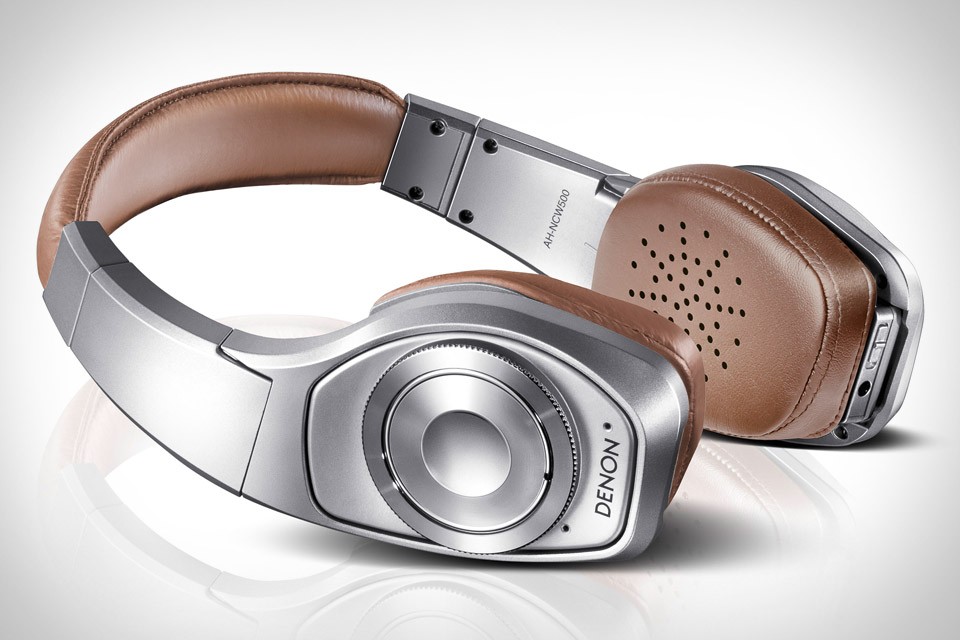
Denon AH-NCW500. All components of the noise reduction system fit in the cups of these headphones
By the way, it is due to the built-in amplifier that some models of headphones with the included noise cancellation system can play better than without it. After all, headphones with “noise” are most often used with smartphones or portable players. The output power of such devices is usually small, and the quality of the built-in amplifiers is not the best. Accordingly, to the maximum use of headphones, they do not give.
The amplifier in the noise reduction system additionally works in this direction. Hence the higher sound quality.

Plug-in wireless Bose QC-30. Part of the noise reduction system components rendered in ergonomic arc
First of all, it should be said that such a system works qualitatively not in the whole frequency range, but in the interval from approximately 100 to 1 KHz. In this area, good headphone models are capable of reducing noise to a level of -30 dB. In the lowest sound range, up to 100 Hz, a person perceives sound vibrations not so much with the organs of hearing as with the body, and the headphones, whatever the level of compensation they would give, will not save from noise.

Bose QC-25 noise cut-off level with the green line turned off and the noise canceling system turned on (the purple line). Source: lifewire.com
In the range above 1 kHz, the system may even add some noise. However, this is not a street rumble, but a steady, quiet “hiss”, moreover - very quiet -
you can hear it only in a very calm atmosphere.
In the range of 100-1000 Hz, provided that the “noise suppressor” is of high quality, it is quite capable of significantly reducing the sound pressure of the environment. In good noise-canceling headphones, it’s quite realistic to feel yourself in a quiet, deserted room, being in a noisy street.
In some models, “shumodav” works truly amazingly. This, for example, is a fresh line of Bose and high -end Sony models, especially the MDR-1000x : put the headphones on and you refuse to believe your ears at first. Models such as Sennheiser Momentum 2.0 Wireless , Parrot Zik , various Beats do a very good job of clipping noise. At the same time, in many budgetary “nounheim” variants, “noise” can be present only nominally, and the effect of its work tends to zero.
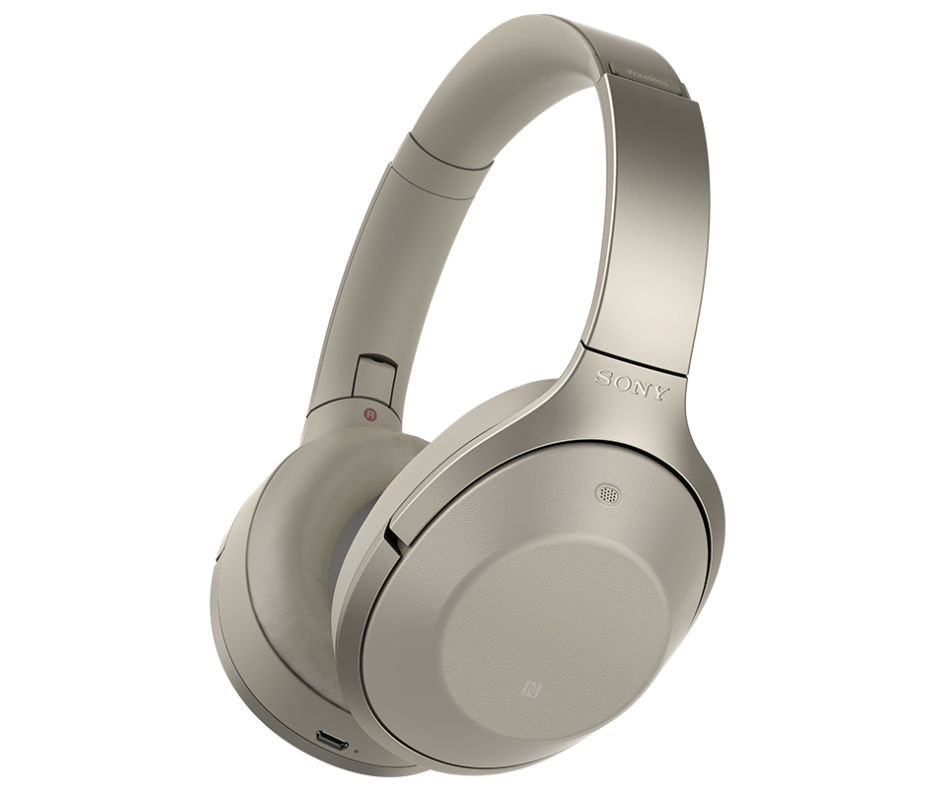
Sony MDR-1000x
It would seem that active noise cancellation technology is a harmless thing. Nevertheless, Internet users are actively interested in the question, is it harmful to hearing and to health in general? There is a corresponding discussion, for example, on the well-known audiophile forum head-fi , where sometimes interesting suggestions are made on this subject. Official scientific studies on this topic have not been carried out, but in general, the prevailing view is that there is no particular cause for concern.
Then where are the fears? The fact is that individual users note symptoms of what can be called individual intolerance “shumodava”. Some people complain that using a noise-canceling headphone for quite a long time causes headaches, dizziness and even nausea.

It is difficult to speak about the true reasons. In some cases, dizziness and pain may occur due to prolonged listening to music, too much pressure of the ear cups to the head and other ergonomic nuances, and the user is charged to work as a “noise remover.”
But the “shumodav” itself may also be to blame. According to one version, the cause of headaches and dizziness is the discord between the picture and the sound. After all, when using headphones with an active noise cancellation system, the user hears not what he sees. For example, if a person in such headphones goes out into the street, almost all the senses will signal the brain that its owner is moving, and around it is noisy. In this case, the rumor will report almost complete peace and quiet. The brain can not always adequately match the information, which leads to discomfort.
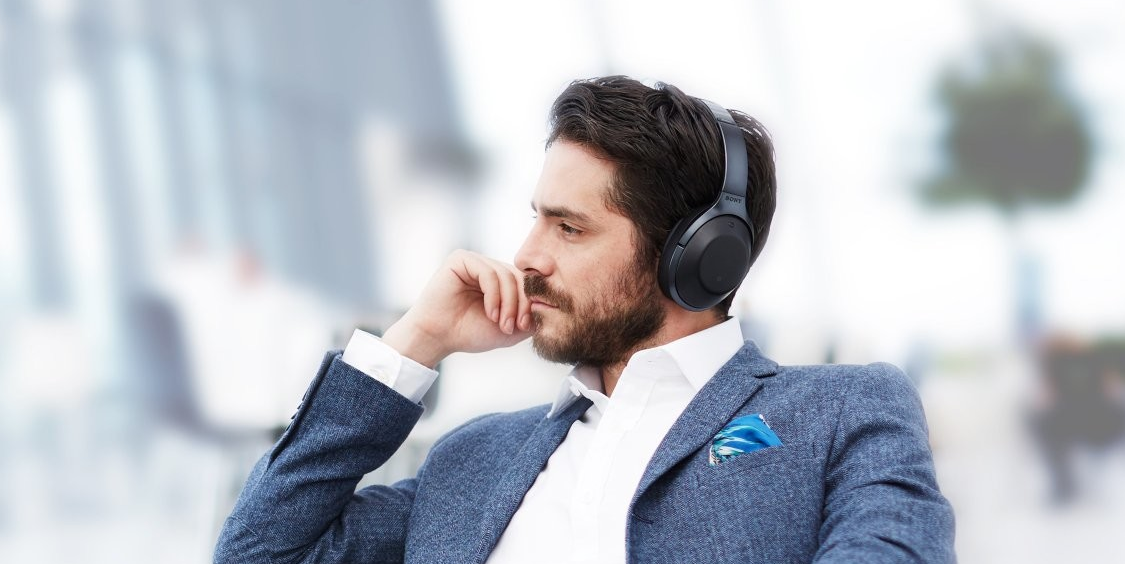
Experts base the second assumption that in the process of operation, “noise” itself produces low-frequency oscillations in significant quantities. These vibrations affect the vestibular receptors that are connected to the hairs of the inner ear, which causes confusion in the work of the vestibular apparatus and, as an option, causes a headache or dizziness in the user.
As practice shows, cases of rejection by the body of “shumodava” are quite rare. But one hundred percent confidence can be acquired only if you test the gadget yourself. For example, borrowed from friends.
It is important that some users, initially faced with "intolerance", gradually got used to the device and stopped experiencing discomfort.
And therefore, if after the first listening you suddenly get sick or dizzy, do not despair - try to give your body time to adapt to the headphones. If possible, try to test them for at least a couple of days.
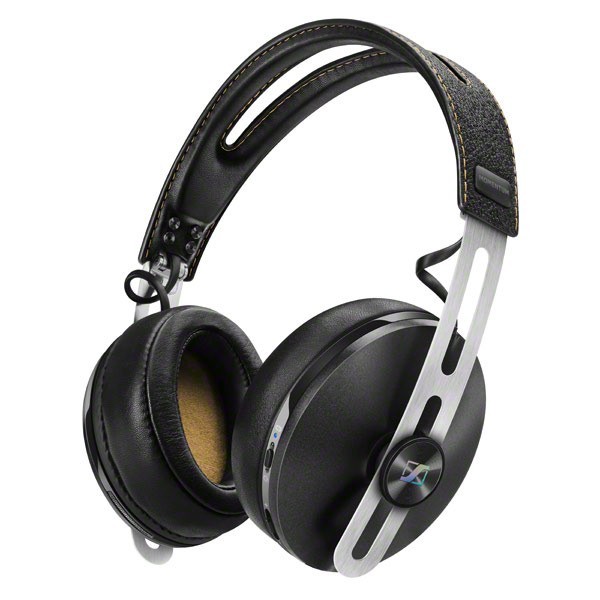
Quality Sennheiser Momentum 2.0 Wireless Noise Canceling Wireless Headphones
The active noise cancellation system is not a panacea, in order to protect oneself from third-party noise, alternative options can be used. Each of them has its advantages and disadvantages.
The first is IEMs, or in-ear headphones. These are essentially the same droplet headphones - only much higher grade. They are made mainly on the basis of rebar emitters, which provide very accurate and detailed music reproduction, and at the same time, due to the design, they demonstrate a very high level of clipping of external noise.
The downside is the specific fit of the headphones in the ear in most models. Not everyone will find it comfortable, which can be clearly seen in this video. IEM is also very demanding on the quality of the source - along with the smallest details of the phonograms, they will successfully disclose all the “jambs” of the audio section. These headphones are better to use with a special audiophile player.
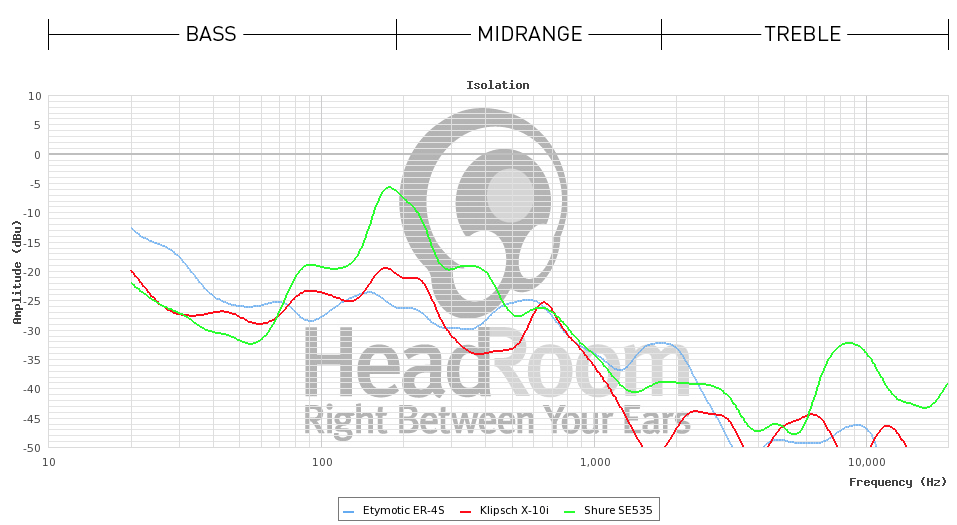
Soundproofing levels for Etymotic ER-4s, Shure SE-535 and Klipsch X10i reinforcement headphones. Source: www.headphone.com
The second option - without the "noise", but with good sound insulation. If your requirements for sound insulation are not extremely high, you are likely to have enough just headphones with a tight fit, specially “sharpened” for use in noisy environments. In fact, this is the "golden mean" between ordinary headphones and models with "noise".
True, there is a "but." First, most models are equipped with thick leather ear cushions and have a large force of pressing cups -
their ergonomics are quite controversial. Secondly, many of them are designed specifically for DJs - hence the specific sound with powerful bass and squandered middle frequencies.

Beyerdynamic T5p. High-noise, audiophile portable headphones
The technology itself active noise suppression also has its drawbacks. There are two main ones: the need to charge the battery and a higher price as compared to headphones without the noise level. One more thing - a person walking along the street in such headphones may not hear the approach of transport and endanger himself, but this is the scourge of any gadget that covers the ears, without being tied to technology.
Headphones with active noise cancellation is a handy tool for comfortable listening to music in a modern city. They are well suited to those who are accustomed not to part with their favorite radio or playlist, but at the same time experiencing discomfort from the "droplets" in their ears. They will also please those who work in noisy conditions, walk a lot on the street or ride the subway. It is not necessary to constantly listen to music - you can simply turn on the noise reduction system and be in silence, while being in the middle of a noisy metropolis.
In general, a dynamic development is predicted for the wireless headphone segment, and the failure of major smartphone manufacturers from the 3.5-mm audio jack should contribute to this. "Shumodav" in such conditions can become a standard option for high-quality wireless headphones. While the implementation of such a system in the device, where a priori there is an electronic filling and batteries, does not look too expensive

The principle of operation of the active noise cancellation system was proposed as early as the 30s of the last century and has not undergone significant changes since then. The basic idea is simple: the system picks up external noises, and then inverts them and reproduces them in antiphase. Thus, the phase and the antiphase of the surrounding noise are mutually counted, due to which its level is reduced.
The implementation of this kind of system for monitor headphones suggests that microphones are installed on the outside of the cups. They pick up the ambient noise, then the system inverts it and transmits it to the speakers.
')
Since the required components of the system are the amplifier and the converter, it cannot work without a power source, which is usually the battery. However, many older models do not function when the “noise level” is off: as soon as the battery is discharged, the music stops. In modern headphones, the system usually allows you to let the signal bypass the "noise" and listen to music without using the battery.

Denon AH-NCW500. All components of the noise reduction system fit in the cups of these headphones
By the way, it is due to the built-in amplifier that some models of headphones with the included noise cancellation system can play better than without it. After all, headphones with “noise” are most often used with smartphones or portable players. The output power of such devices is usually small, and the quality of the built-in amplifiers is not the best. Accordingly, to the maximum use of headphones, they do not give.
The amplifier in the noise reduction system additionally works in this direction. Hence the higher sound quality.

Plug-in wireless Bose QC-30. Part of the noise reduction system components rendered in ergonomic arc
Effectively?
First of all, it should be said that such a system works qualitatively not in the whole frequency range, but in the interval from approximately 100 to 1 KHz. In this area, good headphone models are capable of reducing noise to a level of -30 dB. In the lowest sound range, up to 100 Hz, a person perceives sound vibrations not so much with the organs of hearing as with the body, and the headphones, whatever the level of compensation they would give, will not save from noise.

Bose QC-25 noise cut-off level with the green line turned off and the noise canceling system turned on (the purple line). Source: lifewire.com
In the range above 1 kHz, the system may even add some noise. However, this is not a street rumble, but a steady, quiet “hiss”, moreover - very quiet -
you can hear it only in a very calm atmosphere.
In the range of 100-1000 Hz, provided that the “noise suppressor” is of high quality, it is quite capable of significantly reducing the sound pressure of the environment. In good noise-canceling headphones, it’s quite realistic to feel yourself in a quiet, deserted room, being in a noisy street.
In some models, “shumodav” works truly amazingly. This, for example, is a fresh line of Bose and high -end Sony models, especially the MDR-1000x : put the headphones on and you refuse to believe your ears at first. Models such as Sennheiser Momentum 2.0 Wireless , Parrot Zik , various Beats do a very good job of clipping noise. At the same time, in many budgetary “nounheim” variants, “noise” can be present only nominally, and the effect of its work tends to zero.

Sony MDR-1000x
Safely?
It would seem that active noise cancellation technology is a harmless thing. Nevertheless, Internet users are actively interested in the question, is it harmful to hearing and to health in general? There is a corresponding discussion, for example, on the well-known audiophile forum head-fi , where sometimes interesting suggestions are made on this subject. Official scientific studies on this topic have not been carried out, but in general, the prevailing view is that there is no particular cause for concern.
Then where are the fears? The fact is that individual users note symptoms of what can be called individual intolerance “shumodava”. Some people complain that using a noise-canceling headphone for quite a long time causes headaches, dizziness and even nausea.

It is difficult to speak about the true reasons. In some cases, dizziness and pain may occur due to prolonged listening to music, too much pressure of the ear cups to the head and other ergonomic nuances, and the user is charged to work as a “noise remover.”
But the “shumodav” itself may also be to blame. According to one version, the cause of headaches and dizziness is the discord between the picture and the sound. After all, when using headphones with an active noise cancellation system, the user hears not what he sees. For example, if a person in such headphones goes out into the street, almost all the senses will signal the brain that its owner is moving, and around it is noisy. In this case, the rumor will report almost complete peace and quiet. The brain can not always adequately match the information, which leads to discomfort.

Experts base the second assumption that in the process of operation, “noise” itself produces low-frequency oscillations in significant quantities. These vibrations affect the vestibular receptors that are connected to the hairs of the inner ear, which causes confusion in the work of the vestibular apparatus and, as an option, causes a headache or dizziness in the user.
As practice shows, cases of rejection by the body of “shumodava” are quite rare. But one hundred percent confidence can be acquired only if you test the gadget yourself. For example, borrowed from friends.
It is important that some users, initially faced with "intolerance", gradually got used to the device and stopped experiencing discomfort.
And therefore, if after the first listening you suddenly get sick or dizzy, do not despair - try to give your body time to adapt to the headphones. If possible, try to test them for at least a couple of days.

Quality Sennheiser Momentum 2.0 Wireless Noise Canceling Wireless Headphones
Alternative?
The active noise cancellation system is not a panacea, in order to protect oneself from third-party noise, alternative options can be used. Each of them has its advantages and disadvantages.
The first is IEMs, or in-ear headphones. These are essentially the same droplet headphones - only much higher grade. They are made mainly on the basis of rebar emitters, which provide very accurate and detailed music reproduction, and at the same time, due to the design, they demonstrate a very high level of clipping of external noise.
The downside is the specific fit of the headphones in the ear in most models. Not everyone will find it comfortable, which can be clearly seen in this video. IEM is also very demanding on the quality of the source - along with the smallest details of the phonograms, they will successfully disclose all the “jambs” of the audio section. These headphones are better to use with a special audiophile player.

Soundproofing levels for Etymotic ER-4s, Shure SE-535 and Klipsch X10i reinforcement headphones. Source: www.headphone.com
The second option - without the "noise", but with good sound insulation. If your requirements for sound insulation are not extremely high, you are likely to have enough just headphones with a tight fit, specially “sharpened” for use in noisy environments. In fact, this is the "golden mean" between ordinary headphones and models with "noise".
True, there is a "but." First, most models are equipped with thick leather ear cushions and have a large force of pressing cups -
their ergonomics are quite controversial. Secondly, many of them are designed specifically for DJs - hence the specific sound with powerful bass and squandered middle frequencies.

Beyerdynamic T5p. High-noise, audiophile portable headphones
The technology itself active noise suppression also has its drawbacks. There are two main ones: the need to charge the battery and a higher price as compared to headphones without the noise level. One more thing - a person walking along the street in such headphones may not hear the approach of transport and endanger himself, but this is the scourge of any gadget that covers the ears, without being tied to technology.
What is the result?
Headphones with active noise cancellation is a handy tool for comfortable listening to music in a modern city. They are well suited to those who are accustomed not to part with their favorite radio or playlist, but at the same time experiencing discomfort from the "droplets" in their ears. They will also please those who work in noisy conditions, walk a lot on the street or ride the subway. It is not necessary to constantly listen to music - you can simply turn on the noise reduction system and be in silence, while being in the middle of a noisy metropolis.
In general, a dynamic development is predicted for the wireless headphone segment, and the failure of major smartphone manufacturers from the 3.5-mm audio jack should contribute to this. "Shumodav" in such conditions can become a standard option for high-quality wireless headphones. While the implementation of such a system in the device, where a priori there is an electronic filling and batteries, does not look too expensive

Source: https://habr.com/ru/post/370315/
All Articles